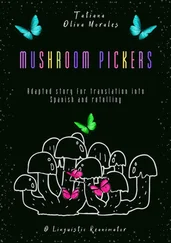And now I want you to do something very powerful and important for yourself. Younger Tammy did something very powerful for you; she went through those feelings again for you, and she let you watch and listen with comfort and strength to stimuli which in the past have triggered overwhelming responses. This time you were able to see and hear those without pinking. I want you to walk over to young Tammy in your mind's eye. I want you to reach out and use all of the adult female resources you have, to comfort her and reassure herthat she will never have to go through that again. Thank her for living through the old feelings for the last time for you. Explain to her that you can guarantee that she lived through it because you are from her future.
And when you see on her face and in her posture and in her breathing that she is reassured that you will be there to take care of her from now on, I want you to really reach out, take her by the shoulders and pull her close and actually feel her enter your body. Pull her inside. She is a part of you, and she's a very energetic part. That energy is freed now from that phobic response. I would like your unconscious mind to select some particular pleasurable activity that some of that energy can now be used for, for yourself here in the present and in the future. Because energy is energy and you deserve it. Just sit there and relax and enjoy those feelings. Let them spread through your whole body. Take your time. You've got plenty going on inside. I'm going to talk to the group.
Do you understand the anchors? First, she holds hands with me. This is a "bail-out" anchor, a resource anchor that will always get her out of trouble and says "Here, you're grounded right here." It's also a really exquisite biofeedback mechanism. By temperature and pressure and moisture changes in her hand, I get an incredible amount of information about her complex internal experience. An anchor here on her arm stabilizes the phobic feelings to use as a lead to go backand find some visual experience that will serve as a metaphor for her entire set of experiences called "the phobic response."
Once she sees herself at an earlier age over there, using the feelings to lead her back to something she had never known about consciously before, then I dissociate her a second step—I ask her to float up out of her body. You could see the changes in posture and color and breathing and so forth which indicated which position she was operating from.
Once the two-step dissociation has been established, I have her watch and listen with comfort to the old experience. She saw and heard things today which have never been available to her before.
Tammy: That's true.
She was so overwhelmed in the past by the kinesthetic phobic response that she couldn't see and hear what was going on. Consciousness is limited. As she watches and listens to herself at a younger age, the competent feelings of comfort and resourcefulness are being associated with the auditory and visual stimuli from the past.
And when she's gone through the whole thing, then we reintegrate. Every model of therapy, every psychotheology, is built on dissociation and sorting to help people reorganize. Whether you call it "parent-child-adult," "topdog-underdog," using chairs or words doesn't matter as long as you label and sort a person's behavior, dissociating parts of them, one from the other. You have the responsibility as a professional communicator to put your clients back together before the session is over. One easy way to make sure the dissociations that you create are re-integrated before the end of the session is to simply reverse the process by which you create the dissociation.
In this particular case, the dissociation is (1) see yourself over there at a younger age, (2) float up and out of your body. For the integration, (1) float back down and rejoin yourself here—and you could see the tremendous change in her that indicated that she had succeeded in doing that, (2) then walk over in your mind's eye, reach out, comfort and reassure the younger Tammy, thank her for going through this so that you could learn, pull her into you, re-integrate her and feel the feelings of energy.
What we're doing here is structured regression. Primal Therapy claims to get complete regression back to infancy. If that were true, then Primal Therapy would achieve change only insofar as it doesn't work! If Primal Therapy really got complete regression, it would be doing exactly what Tammy has been doing with the phobic response up until today. Complete regression simply means that you relive the experience in all systems. If you do that, you reinforce it.
A partial, structured, regression of the type Tammy and I were working with here allows you the freedom to go back and connect new kinds of resources with the auditory and visual stimuli which in the past have elicited old, uncomfortable, kinesthetic responses. It's impossible for her to go through this experience and still maintain that old response because she's done one-trial learning again. Now she doesn't have to be phobic. I haven't taken that choice away. There may be some context in which being phobic in response to something may be useful. I'm not playing God. I presuppose that people make the best choice in context. My job is to make sure that resources which have been dissociated from a certain context become available in that context. I leave it to the unique human being, with all the various needs they have that I don't even know anything about, to make an adequate selection somewhere along the continuum between resourcefulness and terror. And she will. Those resources have been dissociated in the past, but they are now integrated and they are now both responses to the same stimuli.
Man: You are making certain assumptions about integration and a lot of things that have happened.
Right. Is there any particular assumption you'd like to challenge?
Man: Um, all of them.
Good. Pick one.
Man: That she feels any different now than she did before.
OK. Let me give you a way of testing. (He turns to Tammy.) Let me ask you a question. (He touches the phobia anchor. She turns to him and smiles: "Umhm?") That's fine; you answered it. Does that make sense to you, sir? Do you remember that the last time I touched her there she had a phobic response? I had anchored the phobic reaction there, and then I demonstrated that I had control of her phobia. When I reached over and touched her arm she became phobic. Now I reach over and touch her and what does she do? She looks at me as if to say " Whatdo you want?" That is a far more elegant demonstration than any verbal feedback I could get. I'm not saying don't use verbal conscious feedback, but understand that when you ask for that, you are tapping into the least informative part of the person: their conscious mind.
Let me give you another way of testing. Tammy, I'd like you to try something for me. This is just a scientific experiment. Are there any bridges here in town? I would like you to close your eyes and fantasize driving across a bridge, and I want you to do it in a special way. I want you to do it from the point of view of being in a car—not watching yourself—so that you see what you would see if you were actually driving across the bridge. What happens when you do that? ...
Tammy: (She raises her eyebrows, looks slightly puzzled.) I drove across the bridge.
"I drove across the bridge." What could be a more elegant response? If she had told me "I was so happy driving across the bridge," I'd say " What?Wait, it's just an ordinary bridge."
Tammy: But always before when I drove across a bridge, I immediately began to program myself "What am I going to do when the car goes off the side?"
Читать дальше











